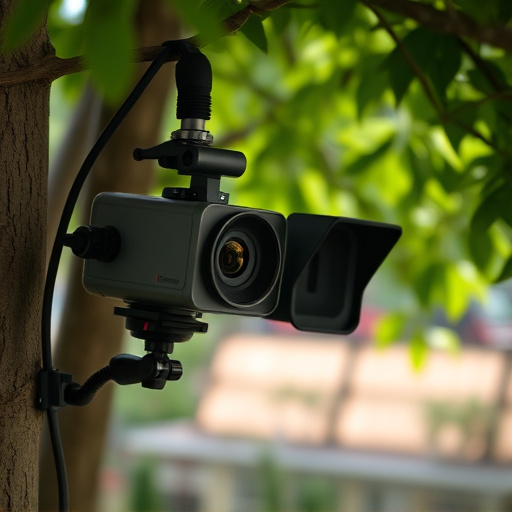Micro Cameras for Child Protection face glint challenges from street lamps and windows, obscuring visual details. Advanced image processing and optics minimize glint impact, ensuring effective surveillance at night in sensitive areas. Compact size and high-quality sensors capture valuable evidence while preserving kids' privacy. Machine learning algorithms trained on diverse datasets enhance accuracy and adaptability in low-light conditions, crucial for safe environments.
In the realm of nighttime surveillance, understanding glint is paramount. This innovative article explores a cutting-edge method for camera lens glint detection, focusing on its potential in micro cameras as a child protection tool. We delve into the science behind glint and the sophisticated techniques, including advanced algorithms, used to identify these subtle reflections. By harnessing this technology, micro cameras offer enhanced safety measures, providing peace of mind in an increasingly digital world.
- Understanding Glint in Nighttime Surveillance
- Micro Cameras: A Child Protection Tool
- Detecting Glints: Techniques and Algorithms
Understanding Glint in Nighttime Surveillance
Glint, or reflective glare, is a significant challenge in nighttime surveillance, particularly with micro cameras designed for child protection. In low-light conditions, glint can obscure critical visual details, making it difficult to identify and monitor subjects. The subtle nature of these reflections, often caused by light sources like street lamps or illuminated windows, poses a unique problem for camera systems.
Understanding glint involves recognizing its various forms, such as spectral reflection from smooth surfaces and diffuse reflection from uneven terrain. By employing advanced image processing techniques and specialized optics, micro cameras can minimize the impact of glint. This ensures that surveillance efforts remain effective, providing clear visuals for monitoring sensitive areas like playgrounds or residential neighborhoods during nighttime hours.
Micro Cameras: A Child Protection Tool
Micro cameras have emerged as a powerful tool in child protection, offering a discrete and effective way to ensure safety in various settings. These tiny yet advanced devices can be seamlessly integrated into everyday objects, such as toys or clothing, making them nearly invisible to potential abusers. With their compact size and high-quality image sensors, micro cameras capture detailed footage, providing valuable evidence for authorities and helping to prevent and solve cases of child exploitation.
In the realm of child protection, micro cameras serve as a silent guardian, allowing caregivers and law enforcement to monitor activities and surroundings without raising unnecessary alarms. Their non-intrusive nature ensures that children’s privacy is largely preserved while still offering a robust security measure. This innovative technology plays a pivotal role in creating safer environments for kids, both at home and in public spaces.
Detecting Glints: Techniques and Algorithms
Detecting glints in low-light conditions is a complex task, especially with micro cameras designed for child protection, where minimal power consumption and compact size are paramount. Advanced algorithms play a pivotal role in identifying these subtle reflections. One common technique involves analyzing the camera’s sensor data, searching for sudden spikes in brightness that indicate a glint. This method requires sophisticated signal processing to differentiate between genuine glints and other potential sources of false positives, such as quick movements or ambient light fluctuations.
Machine learning algorithms have emerged as powerful tools in this domain. By training models on vast datasets of glinted and non-glinted images, these algorithms can learn to recognize patterns unique to glints. This approach not only enhances accuracy but also adapts to varying environmental conditions, ensuring consistent performance in detecting micro camera lens glints during nighttime operations.
The integration of micro cameras equipped with advanced glint detection technology offers a promising solution for enhancing nighttime surveillance, particularly in child protection scenarios. By understanding and mitigating the effects of glints, these devices can provide clearer, more reliable footage, ensuring safer environments for children. Micro Cameras for Child Protection represent a significant step forward in leveraging technology to safeguard our young ones, offering discreet yet powerful tools for peace of mind.
